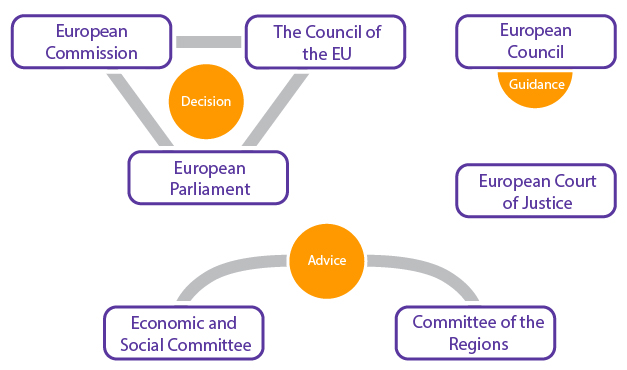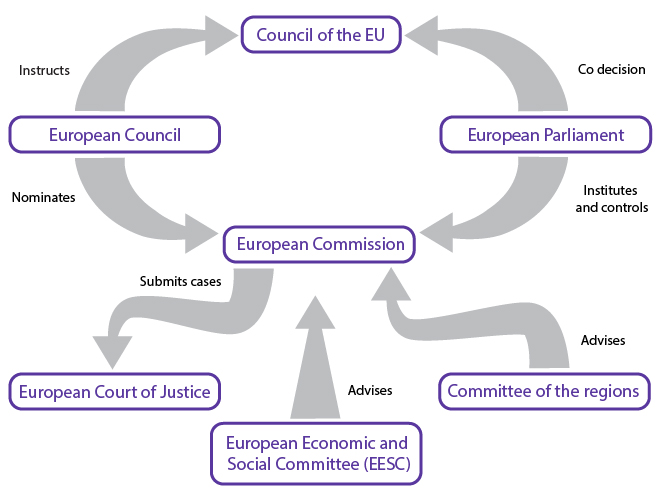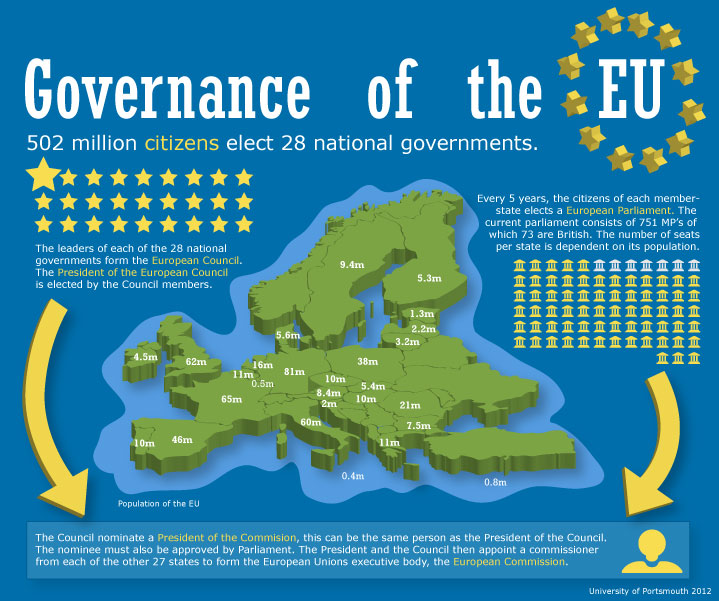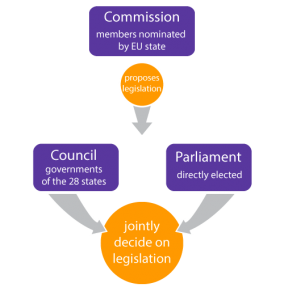The Institutional Triangle
The European Commission, the European Parliament and the Council of the European Union are the three central legislative institutions of the European Union and are often referred to as the EU’s ‘institutional triangle’. They are not the only institutions that have a role in EU decision-making but they are the three most important.
All three play an integral part in the legislative and decision-making process of the EU, but in different ways.
A key thing to remember about these three institutions is that they represent different interests in the EU bureaucracy.
Put simply:
- The European Commission represents the interests of the EU as a whole.
- The European Parliament represents the interests of European Citizens.
- The Council of the European Union (often referred to as just the Council or the Council of Ministers) represents the member state governments.
There are other EU institutions we should also consider:
- The European Council gives the impetus and directions to European integration
- The Committee of Regions & The Economic and Social Committee are advisory bodies
- The European Court of Justice settles disputes
The EU institutional structure could therefore be represented like this:

Let’s watch a video in order to explore further what institutions are and what they do:
http://www.youtube.com/watch?v=VvIPSY_Sbfg
As you noticed, the video suggests interdependencies between the institutions. We will be studying them further and we will analyse the role of each institution separately so you understand well how they work. We will also look at the internal set-up to identify the main actors. At the end of the unit, you should come back to the graph below and re-think the functioning of the EU institutions.

Calendar
| M | T | W | T | F | S | S |
|---|---|---|---|---|---|---|
| 1 | 2 | 3 | 4 | 5 | 6 | 7 |
| 8 | 9 | 10 | 11 | 12 | 13 | 14 |
| 15 | 16 | 17 | 18 | 19 | 20 | 21 |
| 22 | 23 | 24 | 25 | 26 | 27 | 28 |
| 29 | 30 | 31 | ||||


Leave a Reply